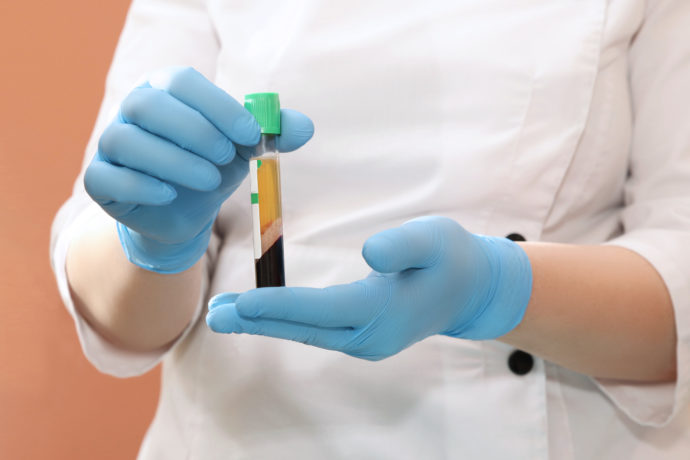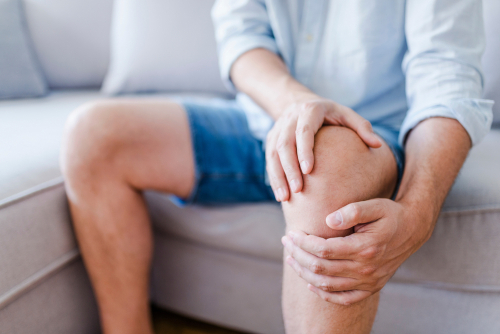
Several recent studies have evaluated the use of platelet-rich plasma (PRP injections) to treat musculoskeletal injuries and conditions such as osteoarthritis (OA).
What Is PRP?
According to the American Academy of Orthopaedic Surgeons, “PRP is plasma with many more platelets than what is typically found in blood. The concentration of platelets — and, thereby, the concentration of growth factors — can be 5 to 10 times greater (or richer) than usual.”
To use PRP as a treatment, platelets from the patient’s own blood are separated from the other blood cells. The platelets undergo centrifugation to increase their concentration, and the platelets are then mixed with the blood again.
Evidence Suggests PRP Could Be Beneficial
One recent study assessing PRP’s efficacy was a meta-analysis recently published in Sports Health: A Multidisciplinary Approach. For this systematic review, researchers queried MEDLINE, EMBASE, Cochrane, CINAHL, SPORTDiscus, and Web of Science libraries through Feb. 8, 2017, and collected data from reviews, trials registries, and recent conferences. Studies eligible for inclusion were randomized trials published in English that compared platelet-rich therapy to a control, assessing patients aged ≥ 18 years with musculoskeletal bone, cartilage, or soft tissue injuries.
The final analysis included 78 randomized controlled trials with a total of 5,308 patients. The researchers considered a standardized mean difference (SMD) of 0.5 as the minimum for significant pain reduction. At three months, PRP was associated with reduced pain (SMD, –0.34; 95% CI, –0.48 to –0.20), which was also observed at one year (SMD, –0.60; 95% CI, –0.81 to –0.39). In lateral epicondylitis, evidence supporting PRP use was low- to moderate-quality (SMD, –0.69; 95% CI, –1.15 to –0.23) at one year; low- to moderate-quality one-year evidence also supported PRP use in knee OA (SMD, –0.91; 95% CI, –1.41 to –0.41).
Another recent study, published in the Journal of Back and Musculoskeletal Rehabilitation, evaluated PRP specifically in patients with knee OA. A total of 60 patients with chronic knee pain were randomized to receive 4 mL PRP intra-articularly (IA) in three doses once a week or one 4 mL dose of saline solution IA. Pain and functional outcomes were assessed using the Visual Analog Scale (VAS) and Western Ontario and McMaster University Osteoarthritis Index (WOMAC), respectively, and ultrasonography (USG) was used to determine distal femur cartilage thickness.
After one month, the PRP group had significantly reduced VAS scores (P < 0.001) and WOMAC pain sub-scores. At six months, VAS scores remained low in the PRP group, and all WOMAC parameters were significantly lower compared to the placebo group. Cartilage thickness did not differ between the groups.
A third study, published in the Journal of Orthopaedic Research, evaluated whether cartilage thickness played a role in outcomes for knee OA patients undergoing PRP therapy. This trial included 59 patients who underwent PRP with a low-leukocyte autologous conditioned plasma (ACP) system. Patients underwent MRI prior to treatment; researchers collected patients’ Whole-Organ MRI Score (WORMS), which determined knee OA level based on 14 parameters: integrity of the cartilage, affection of the bone marrow, subcortical cysts, bone attrition, osteophytes, integrity of the menisci and ligaments, presence of synovitis, loose bodies, and periarticular cysts.
Per the WORMS Cartilage Score, OA severity was classified as mild (20.3%), moderate (55.9%), and severe (23.7%). After PRP therapy, VAS scores decreased by 3.58 points, and WOMAC-Score decreased by 23.51 points. There were no significant differences in pain improvement based on OA level; the researchers concluded, “The findings of the current study suggest that positive effects of intraarticular injections of PRP might improve quality of life and reduce the pain of patients suffering from osteoarthritis of the knee joint independent from the level of cartilage damage.”
Sources: Sports Health: A Multidisciplinary Approach, American Academy of Orthopaedic Surgeons, Journal of Orthopaedic Surgery and Research, Journal of Back and Musculoskeletal Rehabilitation







 © 2025 Mashup Media, LLC, a Formedics Property. All Rights Reserved.
© 2025 Mashup Media, LLC, a Formedics Property. All Rights Reserved.